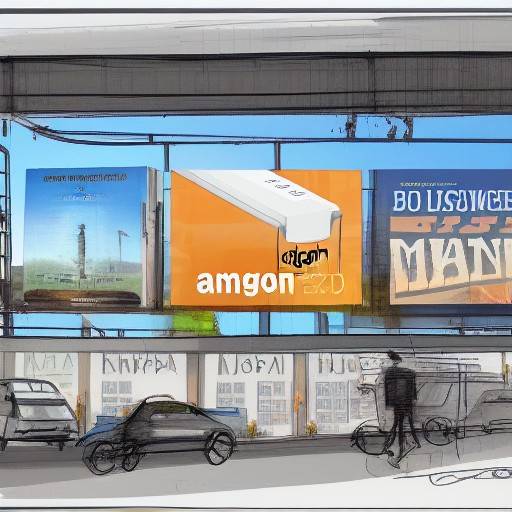Retail media, which is now the third largest digital channel, is expected to grow by 53.4% year over year (YoY) by the end of 2022. Compared to the 14.9% overall YoY growth in digital advertising spending, retail media is the hottest niche in one of the hottest industries. Consumer goods companies are “all in” with this channel, and 81% of them plan to increase their investments in retail media networks in the next 12 months.
Next-generation marketing strategies are being made and used by industries that deal with customers to improve the customer experience in the coming year. Customers can already buy things through several different channels, which gives them a lot of control over how they buy things. To keep up with these customer-focused retail trends, marketing teams will need to be able to use advanced, data-driven marketing analytics to create memorable customer experiences.
We know that retail media is always changing if there’s one thing we know for sure. More ways to target customers, actionable insights to help you make the most of your advertising budget, and, in the end, more sales. But what are some key trends that advertisers can look out for as we move toward 2023?
Let’s dive in.
What is Retail Marketing?
Retail marketing is the strategies, tactics, and projects that retail businesses use to increase brand awareness, sales, and their overall return on investment (ROI).
It’s a good thing that retail media networks are starting up now. As more people buy things online, retailers are having trouble with the lower profit margins that often come with digital sales. Retailers can make up for the shrinking margins of digital sales by getting more money from retail media networks.
Given all of this, it’s clear that retail media networks are a big part of the future of retail and one of the most important retail trends of 2023. But the simple retail media networks of today will need to change in eight key ways if they want to keep going.
What will be the trends in retail media in 2023?
1. Publisher fragmentation is becoming an even bigger problem for the success of retail media.
In the channel, there is already a pretty big group of retailers (retail media publishers). And that isn’t stopping. Merkle said in September that every one to two months, a new retail media network is created. Whether they do it themselves like Amazon and Walmart or use aggregator platforms like CitrusAd or Criteo, every online retailer with a large audience sees the retail media channel as a way to make more money and get their manufacturer clients more involved. There are many more, like Instacart, Target, GoPuff, and dozens more.
There are only a few or just a few big publishers in other big digital channels like paid search and paid social, so this is a bit of a new challenge. And in programmatic display, almost every website online can be a publisher, so SSPs and DSPs do a good job of bringing everything together.
So, how do people who work in retail media deal with all of these different programmes? How do they divide up the money between so many partners? Should they send the next person who is interested in Amazon? Walmart? Best Buy? Target? The list keeps getting longer.
Retail media marketers will need to figure out all of these things quickly by 2022. The fragmentation problem is getting out of hand, whether you use a third-party campaign management platform or learn how to use spreadsheets well. Those who can’t figure out this complexity will soon be at a big disadvantage compared to those who can.
2. Rapid growth means more oversight and scrutiny (and maybe some extra help)
The channel will have a big year in 2023, when the “first era” of retail media may be over. The channel is growing up quickly, which means that the early adopters will have to get smarter if they want to keep getting the high performance they did before the auctions were full. Before that can happen, things like rising ad costs and the fact that publishers are spread out need to be fixed.
Retail media investments are going up, which means business leaders will have to pay more attention to them. When a channel is just starting and the budgets are small, bad performance doesn’t pose a big risk. But as retail media gets a bigger share of the money spent on marketing each year, the effect on the bottom line will be a bit bigger. On the bright side, more scrutiny from stakeholders could also lead to more investments in expertise and technology to reduce that risk, which could be a good thing.
As retail media continues to grow at a rapid pace, more eyes will be on what was once a new channel with little oversight in 2023. Marketers will hopefully get some help and support from above.
3. Amazon Attribution is becoming more popular and more important.
With the rise of retail media, brands can finally do what they’ve been doing offline for decades: market to shoppers inside the store. This is making people talk and think about how best to use digital advertising in the commerce funnel after a pandemic. Up until now, paid channels like paid search and paid social have mostly been used to drive users to websites and apps that the company owns. But now that brands can influence shoppers at the point of purchase with retail media, digital channels are quickly being changed to send interested users to online stores.
And because media are always changing, so must the way we measure them. For instance, web analytics and other tools make it easy to track how many people click on ads on owned properties. But when that traffic goes to retail partner sites, marketers can’t see how it does, which is important for optimising bids, budgets, and creativity to get the best return on investment (ROI). Brands can get this kind of exposure through Amazon Attribution. Brands of consumer goods have been excited about how this measurement solution can help them grow their programmes. In 2022, we should start to see more brands using it.
4. To succeed, there will need to be more AI and automation.
As we’ve already said in this article, retail media marketers will face new challenges in 2023 if they want to keep getting the same high return on investment (ROI) they’ve been getting for the last few years. To deal with more competition, more fragmentation, and rising costs, people will need to change the way they think. Technology has long been one of the most important ways for marketers to improve performance and deal with problems.
There are many ways in which technology can help marketers. For example, it can automate tasks that people do over and over again, giving them more time to work on more important projects. This can include everything from emailing potential customers and editing photos. A solution like Mailchimp can allow you to include automatic tags for personalization, whereas Picsart’s photo editing solution uses AI technology to remove blemishes, improve the image’s color, and remove the background.
5. Shopping on Social Media Sites
Forbes says that about 15,000 retailers will close their physical stores in 2020. Because of this, many social media platforms have added ways to shop online. For example, Instagram just added the Shop tab, which lets users search for brands, creators, and products and connect with them. On the other hand, many brands are taking advantage of influencer-based marketing by forming sponsored partnerships with popular content creators and affiliate marketing with them. As these digital platforms continue to bring shopping directly to consumers, brands should think about how they can use them to learn more about their target audience and make their products even more tailored to them.
6. Integrating online and offline experiences to make them more personalised
Personalization has been a mainstay of retail innovation for most of the last 10 years. This trend is likely to keep going in 2023, as retailers start to look at customer data in a more complete way. Instead of using customer data to send them targeted ads and promotions, retailers will use personalised people-based marketing insights to make shopping easy and streamlined. For consumers who are short on time, this is a big value-add. At a time when many people would rather only shop online, creating a personalised experience based on customer feedback can help fill the gap that a salesperson in-store would normally fill.
Retailers should find out what a customer likes, needs, and value so they can give them the best experiences. So, when a customer visits your online storefront, they should see personalised suggestions based on what they’ve been looking for and what they’ve bought in the past, both online and off. Marketers need to think about how these efforts will be measured because attribution models like media mix modelling and multi-touch attribution can’t give the detailed, cross-channel insights that are needed to make smart decisions about future media planning. Instead, they should think about using marketing technology to get a more complete, unified measurement of marketing.
The COVID-19 pandemic has also made it clear that people need to be able to change. Many marketers are having trouble keeping up because their historical data and usual performance benchmarks no longer work. After 2022, it will be important to have flexible marketing analytics to keep up with sudden changes in the market. Marketers should think about whether or not their current solutions can take this into account.
What do you need to do to get ahead?
1. Make the shopping experience better.

The best ways to market to shoppers improve the shopping experience. Customers benefit from a well-placed end-cap that shows off a new product or a mannequin dressed in a stylish outfit. But it’s not helpful for shoppers to be flooded with irrelevant search results that were bought by the advertiser who bid the most. Retail media networks need to find a good balance between free and paid media and make sure that the paid media is very relevant to what the shopper is trying to do at the moment.
2. Don’t just act as a tax.
Most brands don’t see a good return on their advertising dollars from retail media networks other than Amazon. Not because it’s a good investment for the brand, but because retailers make it a requirement of doing business with them (like a tax). Retail media networks need to become the best place for brand marketers to put their money if they want to grow and stay in business.
3. Show that the money spent on ads is paying off (ROAS).
Just looking at how many shoppers see a sponsored ad and then buy the product right away from a retailer’s website doesn’t show that those ad dollars have a high rate of return. Instead, brands need to see how these ads affect in-store purchases and longer decision-making processes to know how valuable their ads are. Retailers, like Amazon Marketing Cloud, are just starting to build these metrics for advertisers. Retailers don’t usually give these kinds of insights in a timely or automated way. In the end, retailers need to show that retail media networks are worth the higher prices they want.
4. Use the people who are in the store.
There aren’t enough ad impressions on e-commerce sites from sponsored search results for retailers to reach their growth goals. Online shopping accounts for only 13.2% of all retail sales in the US. Retail media networks need to reach the huge number of people who shop in physical stores if they want to grow. Retail media networks have to sell ad space on mobile phones, digital screens in stores, and e-commerce sites.
5. Reach people outside of your site.
Retailers can use their first-party data to help brands better target digital ads across the web, not just for the people who visit their website. A good early example of this is the partnership between Walmart Connect and Trade Desk. Retailers need to show that this data is better than third-party data that is easy to get.
6 . Be more dynamic.
Advertisers need to be able to dynamically target audiences and serve ads with content that is generated on the fly. Some of the best digital advertising platforms, like Meta and Google, let you make changes in real time. Artificial intelligence algorithms run thousands of marketing tests, changing the ads’ content and who they’re aimed at in real-time to find the best one quickly. The level of optimization for retail media networks needs to be the same.
Conclusion
If these predicted changes to retail media networks come true, retailers will have a real chance to be at the top of consumer marketing for a long time to come. Retail media networks can change the unit economics of the retail industry and the way brands and retailers do business for good.
There’s no doubt that 2023 will be a busy year for brands, agencies, and advertisers in retail media. More choices and better abilities will give you more chances to increase sales, but will you be able to handle the added complexity?
If you’re looking to explore the possibilities of AI and be ahead of your competitors, you should try AiHello. According to Saif Elhager, AiHello is built for customers they understood deeply.

